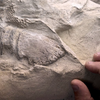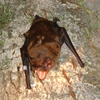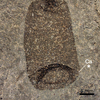Can an Octopus’s Genome Help Scientists Chart Changes in Antarctic Ice?

An octopus (source: Tennessee Aquarium)
Post Author - Ellis Nolan
Octopuses are fascinating creatures with a wide range of characteristics and abilities, such as opening jars, solving mazes, and even changing shapes and colors. However, for one group of researchers, these amazing animals may unlock a new understanding of a key event in the geological history of the Antarctic.
A little more than 100,000 years ago, the Earth experienced a brief warm period during an otherwise frigid string of ice ages lasting millions of years. This period is known as the Last Interglacial, and it saw Earth’s oceans rise 5 to 10 meters higher than modern day, as well as an increase in the average global temperature by 0.5 degrees Celsius. Scientists have long thought that the enormous western ice sheet of the Antarctic collapsed during this period, contributing to the sea level rise. However, this hypothesis was difficult to prove with geological evidence alone.
That is until a group of biologists thought of a creative solution. The scientists examined multiple specimens of Turquet’s Octopus, an organism whose ancestors would have lived in multiple interbreeding populations in the Antarctic prior to the formation of the western ice sheet. Once the ice sheet formed, their passage was blocked, and the populations were not able to interbreed, causing their genetic information to diverge. The researchers hypothesized the following: If the western ice sheet collapsed during the last interglacial, there should be a corresponding convergence in the Turquet’s Octopus’ genome since the different populations would be once again able to interbreed.

Western Antarctica
Almost 100 samples were taken from the octopuses for this experiment. In analyzing the octopuses' genome, geneticists first grouped the octopuses into populations, using patterns called SNPs (single-nucleotide polymorphisms). They then ran a computer simulation that examined the average mutation rates of the octopuses in three scenarios: the ice sheet collapsing fully and allowing all populations to interbreed, collapsing partially and only allowing some populations to interbreed, and, finally, not collapsing at all. The octopuses’ genome, the researchers report, most closely matched the first scenario, and dated the resume of the populations’ interbreeding to roughly 100,000 years ago.
That the western ice sheet likely did collapse fully has wide implications for the modern day. Since global warming is rapidly moving the average planetary temperature to that of the last interglacial, another collapse could mean ocean levels rising 5-10 meters once again, as well as drastic changes in the habitats of Antarctic wildlife, such as the Turquet’s Octopus. One thing is almost certain—this will not be the last thing humans learn from octopuses.
Featured Product
Joe Frazier Boxing Glove
Cool Things!

Is “Paul is Dead” Dead?: Unpacking One Of Pop Culture’s Most Enduring Conspiracy Theories

Scientists Discover Hooves and Skin in Preserved Dinosaur "Mummies!"
A dinosaur discovery just in time for Halloween! In a new analysis of a group of fossils from Wyoming, Scientists have determined this group of fossils are dinosaur “mummies,” with preserved skin and even hooves.

Scientists Record a Bat Catching Birds Mid-Flight!
Bats, birds, screeches, oh my! In a reverse-Hitchcock twist, a new study reveals that a species of European bat catches and eats birds mid-flight.
Specimen Deep Dives

The House that Ruth Built: The Story of the Old Yankee Stadium

The Queen of the Skies: the Story of the Boeing 747

Old Ironsides: The USS Constitution and the Start of the U.S. Navy
Long Form Articles

The Artist Behind the Macintosh: Susan Kare and Apple Computers
While the two Steves, Jobs and Wozniak, are the most well known faces behind Apple computers, equally important to the products and culture of the company were those who crafted the experience of using their computers through design. The most notable of these visual architects was Susan Kare, a designer responsible for “humanizing” Macintosh computers.

Can I Lick It? Yes You Can!
Have you ever been unable to tell if a fossil was really a fossil, but you were too embarrassed to admit it? Have you ever wanted to lick a fossil just because, but you didn’t want to risk judgment from your peers? Well, good news! You can kill two birds with one stone! Licking a fossil can actually help you determine if it’s the real deal or just another rock.

Is It Legal To Own a Meteorite: How to Start Your Outer Space Collection!
Meteorites are some of the rarest geological specimens to be found on Earth. Of course, since these stones are not of our world, purchasing them can sometimes be a confusing process. Is it legal to own a meteorite? In short, yes! Read on for help starting your cosmic collection!


















